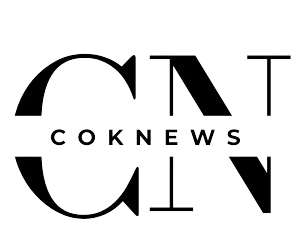Building a Doordash clone is an attractive business idea in today’s fast-paced world, where on-demand food delivery apps are in high demand. Doordash is one of the top food delivery platforms, making it a popular model for businesses looking to enter the market with a similar app. However, one of the first questions that arise when considering clone app development is the cost. This article will provide a detailed breakdown of the various factors that influence the cost of developing a Doordash clone.
What Is a Doordash Clone?
A Doordash clone replicates the popular Doordash app with similar features, functionalities, and user interface. These clones can be customized to meet the specific needs of your business or niche. Building a clone means you don’t have to start from scratch, as you can use an existing framework, which reduces development time and cost.
Key Features of a Doordash Clone
Before diving into the cost, it’s important to understand the key features that a Doordash clone must include to function effectively.
1. User Panel Features
The user panel is where customers interact with the app to browse menus, place orders, and track deliveries. Key features include:
- User registration/login: Allow users to sign up or log in via email, phone, or social media accounts.
- Restaurant listing: Display restaurants with menus, ratings, and reviews.
- Search and filter options: Users can search for specific food items or restaurants.
- Order tracking: Real-time tracking of the order status and delivery driver.
- Payment gateway integration: Options for secure payment via credit/debit cards, e-wallets, or cash on delivery.
- Order history: Users can view past orders and reorder.
2. Restaurant Panel Features
This panel allows restaurant owners to manage their orders and interact with customers. Key features include:
- Order management: Accept, decline, or track the status of orders.
- Menu management: Add, edit, or remove items from the menu.
- Analytics dashboard: View reports and insights about sales, customer preferences, and earnings.
- Push notifications: Receive updates for incoming orders and other important activities.
3. Delivery Driver Panel Features
The delivery driver panel is essential for drivers to receive, accept, and deliver orders. Features include:
- Profile creation: Drivers can create profiles and upload necessary documents.
- Order management: Accept or decline delivery requests.
- GPS tracking: Navigate to restaurants and customer locations with map integration.
- Earnings and payout details: View earnings and payment history.
4. Admin Panel Features
The admin panel helps the business owner manage the overall operations of the platform. Features include:
- User management: Control user registrations, suspensions, and activity tracking.
- Restaurant and driver management: Onboard restaurants and drivers, manage approvals, and view performance reports.
- Financial management: Handle payments, commission structures, and transaction histories.
- Customer support tools: Provide assistance through chat or call support systems.
Factors That Influence the Cost of Building a Doordash Clone
Several factors determine the cost of developing a Doordash clone, each contributing to the overall price based on complexity, features, and the choice of technology stack. Here’s a breakdown of the most crucial cost drivers:
1. App Platform
One of the first decisions to make is whether to develop your Doordash clone for iOS, Android, or both. Developing for a single platform will cost less compared to building for both. However, launching on both platforms simultaneously allows you to reach a wider audience, albeit with increased costs.
- iOS only: $20,000 – $30,000
- Android only: $20,000 – $30,000
- Both platforms: $40,000 – $60,000
2. App Design and User Interface
The design and user interface (UI) play a significant role in the cost of development. A simple design with basic layouts will be more affordable than a sophisticated design with custom animations, transitions, and high-resolution graphics.
- Basic UI/UX design: $5,000 – $10,000
- Advanced UI/UX design: $10,000 – $20,000
3. Feature Complexity
The number and complexity of features can significantly impact the cost. Advanced features such as real-time order tracking, AI-driven recommendations, and dynamic pricing require more development effort and resources.
- Basic feature set: $20,000 – $40,000
- Advanced feature set: $40,000 – $80,000
4. Backend Development
The backend is where most of the heavy lifting happens. It handles user authentication, payment processing, database management, and order tracking. Depending on the scalability and security requirements, backend development can be more or less expensive.
- Basic backend development: $15,000 – $30,000
- Advanced backend development: $30,000 – $50,000
5. Third-Party Integrations
To build a functional Doordash clone, you’ll need to integrate third-party services like payment gateways, GPS for real-time tracking, and SMS or push notifications. Each of these integrations comes with its own cost, including the API fees and the time needed for development.
- Payment gateway integration: $5,000 – $10,000
- GPS integration: $5,000 – $10,000
- Push notifications and SMS services: $2,000 – $5,000
6. Development Team Location
The cost of hiring a development team varies widely depending on where the developers are located. Generally, developers in North America and Europe charge more than those in Asia or Eastern Europe. However, the quality of work can still be high even at lower costs in regions like India, Vietnam, or Ukraine.
- North America/Europe: $100 – $200 per hour
- Asia/Eastern Europe: $30 – $70 per hour
7. Maintenance and Updates
Once your Doordash clone is up and running, you’ll need to allocate a budget for ongoing maintenance, bug fixes, and updates. This ensures the app runs smoothly and remains compatible with the latest operating systems.
- Annual maintenance cost: $10,000 – $20,000
8. Marketing and Launch Costs
Lastly, consider the cost of marketing your app and gaining initial traction. This includes paid advertising, social media campaigns, and search engine optimization (SEO) to drive user acquisition.
- Marketing budget: $5,000 – $20,000
Total Cost Estimate for a Doordash Clone
Based on the factors listed above, the cost to develop a Doordash clone can vary widely. Here’s a rough estimate of the total cost:
- Basic Doordash clone: $50,000 – $80,000
- Advanced Doordash clone: $80,000 – $150,000
Conclusion
Developing a Doordash clone offers a great opportunity to enter the booming food delivery market, but it’s essential to understand the costs involved. The overall price depends on various factors like the app’s complexity, features, and platform choices. By carefully planning and selecting a competent development team, you can build a competitive clone app at a reasonable price. The investment required might seem steep, but with proper execution, it can lead to high returns in a growing market.
FAQs
1. How long does it take to develop a Doordash clone?
The development timeline depends on the app’s complexity and features. A basic app can take around 4-6 months, while a more advanced app may require 8-12 months.
2. Can I customize my Doordash clone?
Yes, you can fully customize a Doordash clone to meet your business needs, whether it’s changing the UI/UX, adding unique features, or integrating specific third-party services.
3. Is it cheaper to use a pre-built clone script?
Using a pre-built clone script is cheaper, with prices ranging from $5,000 to $20,000. However, customization options may be limited, and the app may lack scalability compared to a custom-built solution.
4. How can I monetize my Doordash clone?
You can monetize the app by charging delivery fees, restaurant commissions, or offering subscription services for premium features.
5. Do I need to hire a development company?
While you can hire freelancers for specific tasks, working with an experienced clone app development company ensures a more cohesive and well-executed product.



